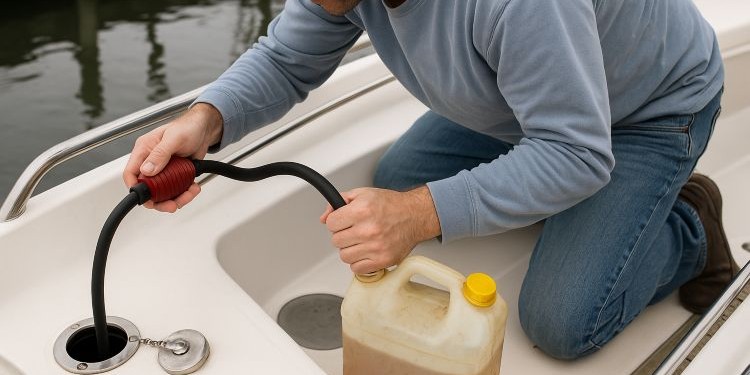Let’s be honest — in a crisis, the gas in your boat tank is more than just fuel for a fishing trip. It’s backup power for your generator, your bug-out vehicle, or your escape plan. But here’s the thing nobody talks about: if you don’t know exactly how to siphon that fuel safely, you’re gambling with both your equipment and your survival chances.
During supply chain breakdowns, storms, or grid failures, boat fuel becomes a hidden goldmine. And trust me — you don’t want to be the guy watching his family sit in the dark while 30 gallons of perfectly good gas is sitting ten feet away, locked inside a fiberglass shell.
First – Know the Law and the Risks
Before you start, remember: siphoning from any boat that isn’t yours is theft, plain and simple. I’m talking about your own boat, your family’s, or one you have permission to use. Fuel is dangerous, flammable, and a major fire hazard. You’re working with a volatile liquid, so ventilation, no smoking, and zero open flames are non-negotiable.
Related: 6 Easy Ways to Siphon Gas in A Survival Situation
The danger isn’t just explosions. Breathing in vapors can knock you out cold before you even realize what’s happening. That’s why old-timers always said, “Work outside, upwind, and with your head higher than the tank.” They weren’t being dramatic — they were staying alive.
The Siphoning Method – Step by Step
Step 1: Get the Right Gear
You’re going to need:
- A fuel-rated siphon hose with a priming bulb or hand pump
- A clean gas can (approved container only)
- A rag to wipe spills
- Gloves to keep fuel off your skin
If you think you can just grab a random garden hose, you’re asking for trouble. Fuel will eat through the wrong materials and contaminate your gas.
Step 2: Access the Tank
Some boats have easy access to the filler neck, others hide it under deck panels. Either way, you want the shortest, straightest path into the fuel. If the filler is awkwardly placed, be patient — forcing a hose can damage internal fittings.
Step 3: Prime the Siphon
For a manual bulb siphon, squeeze the bulb until you see fuel moving. For a traditional hose, the old “mouth method” is risky — vapors and liquid fuel can cause serious harm. If you must use it, keep the intake end submerged, pull suction just enough to start the flow, and be ready to drop it into the container immediately.
Step 4: Let Gravity Work
Position your gas can lower than the tank and let the fuel run. Never leave the setup unattended — the last thing you want is a flammable puddle.
Step 5: Seal and Store
Once you have what you need, clamp or pinch the hose before lifting it out. Store your fuel in an approved container in a cool, dry place away from flames.
Why This Matters More Than You Think
In a disaster, marinas close, fuel docks run dry, and boat tanks become emergency reserves. The fuel inside is usually ethanol-free marine gas — it stores better, runs cleaner, and works perfectly in generators, chainsaws, and older vehicles.
Related: How to Drain a Fuel Tank: A Step-by-Step Guide for Preppers
And here’s a truth no one wants to admit: during shortages, fuel is currency. If you can safely extract and store it, you have trade leverage that could mean the difference between a hot meal and going hungry.
The Bottom Line
Siphoning gas from your own boat tank isn’t about cutting corners — it’s about not letting resources go to waste when you need them most. Learn the skill now, practice safely, and you’ll never look at that docked boat the same way again.
Because when the pumps run dry, those who know how to get fuel from unconventional sources won’t be stranded. They’ll be the ones moving forward while everyone else is stuck.
You may also like:
 How to Siphon Gas from a Motorcycle
How to Siphon Gas from a Motorcycle
Arizona Farmer Accidentally Discovers Trick to Turn Air into Water (Video)
How To Recondition Old Gasoline
7 Survival Uses for Expired Gas





















